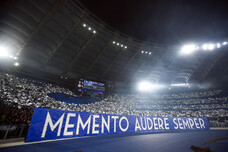Leonardo da Vinci's famed
Codex Leicester is set to return to Italy after over 20 years.
The codex will be loaned by its owner Bill Gates to the
Uffizi Gallery in Florence which will put it on show from
October next year until January 2019 in the run-up to 2019's
500th anniversary of the death of the Tuscan genius, Uffizi
Director Eike Schmidt said Friday.
The manuscript, which mainly treats scientific subjects, was
bought by Gates in 1994 who paid American oil tycoon Armand
Hammer some 30.8 billion dollars for it.
It is coming back to Italy on the basis of an agreement,
Schmidt said, "on which intense work was done since 2015, when
the Codex was shown in Minneapolis".
The last time the Codex was shown in Italy was in 1995, at
Palazzo Querini Dubois a Venice.
Its last appearance in Florence was in 1982, when it was the
focus of a monographic show that attracted huge crowds.
The Codex Leicester (also briefly known as Codex Hammer) is
named after Thomas Coke, later created Earl of Leicester, who
purchased it in 1719.
Of Leonardo's 30 scientific journals, the Codex may be the
most famous of all.
The manuscript currently holds the record for the second
highest sale price of any book, as it was sold to Microsoft
founder Gates at Christie's auction house on 11 November 1994 in
New York for US$30,802,500 (equivalent to $49,772,200 in today's
money).
The Codex provides an insight into the inquiring mind of the
definitive Renaissance artist, scientist and thinker as well as
an exceptional illustration of the link between art and science
and the creativity of the scientific process.
The original title of Leonardo's notebook may have been
On the Nature, Weight and Motion of Water.
The Codex has been described by exhibit curators as a
"booklet of notes, observations and experiments for strictly
personal use".
Physically, it consists of 72 handwritten pages bound in
red leather, containing 360 diagrams and drawings relating to
Leonardo's experiments in hydraulics, geology, paleontology,
mechanics and astronomy, as well as speculative designs for such
then-unheard-of inventions as the submarine and the diving mask.
The manuscript does not take the form of a single linear
script, but is rather a mixture of Leonardo's observations and
theories on astronomy; the properties of water, rocks, and
fossils; air, and celestial light.
The topics addressed include:
1) an explanation of why fossils can be found on mountains.
Hundreds of years before plate tectonics became accepted
scientific theory, Leonardo believed that mountains had
previously formed sea beds, which were gradually lifted until
they formed mountains.
2) the movement of water. This is the main topic of the
Leicester Codex. Among other things, Leonardo wrote about the
flow of water in rivers, and how it is affected by different
obstacles put in its way. From his observations he made
recommendations about bridge construction and erosion.
3) the luminosity of the moon. Leonardo speculated that the
moon's surface is covered by water, which reflects light from
the sun. In this model, waves on the water's surface cause the
light to be reflected in many directions, explaining why the
moon is not as bright as the sun. Leonardo explained that the
pale glow on the dark portion of the crescent moon is caused by
sunlight reflected from the Earth. Thus, he described the
phenomenon of planetshine one hundred years before the German
astronomer Johannes Kepler proved it.
The Codex consists of 18 sheets of paper, each folded in half
and written on both sides, forming the complete 72-page
document.
At one time the sheets were bound together, but they are now
displayed separately.
It was handwritten in Italian by Leonardo, using his
characteristic mirror writing, and supported by copious drawings
and diagrams.
ALL RIGHTS RESERVED © Copyright ANSA











